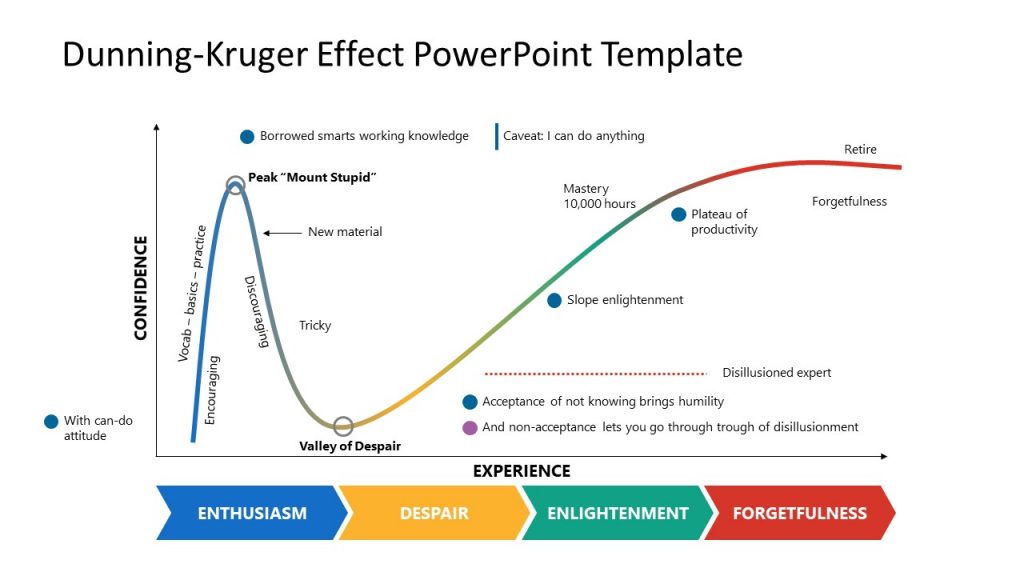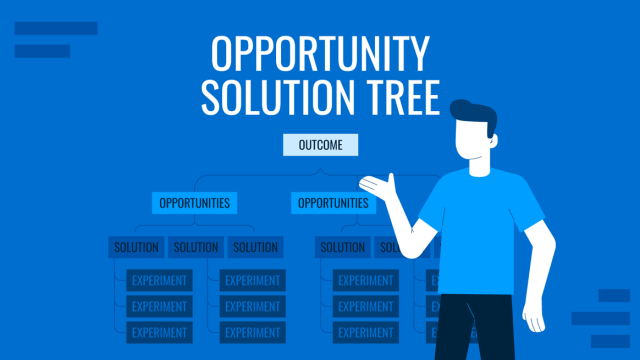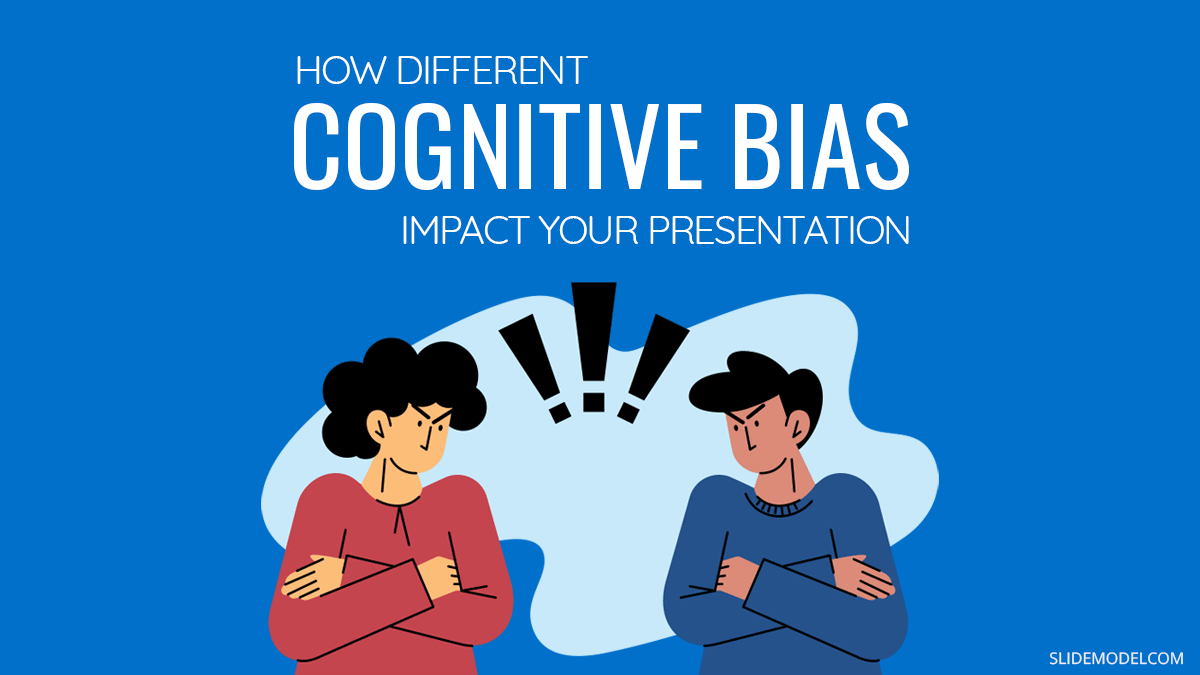
The human brain is a weirdly wonderful organ. It processes gazillions of sensory data points in a matter of seconds. But such supersonic cognitive speed comes at a toll. Rather than bringing up a ton of information from memory, our brain often leans on mental shortcuts to accelerate thinking. These are called cognitive biases — an important mind pattern to account for when interacting with the public.
What Is Cognitive Bias?
In the early 1970s, Amos Tversky and Daniel Kahneman — the “founding fathers” of cognitive psychology — coined the following cognitive bias definition:
“A cognitive bias is people’s systematic but purportedly flawed patterns of responses to judgment and decision problems.”
In other words, a cognitive bias is a certain, often erroneous, thinking pattern we lean on when musing over a problem. It is our brain’s way of expediting information processing. So that we can quickly make sense of what we are seeing. Helpful in theory, biases often end up problematic in action. Because, inadvertently, they derail us from logical thinking.
Why It is Important to Recognize and Address Biases
Everyone is prone to social cognitive biases. And no one can fully eliminate them from their thinking. Leaving us with only one way to deal with them — recognize and acknowledge.
Biases must be acknowledged because they stand in the way of accurate information exchanges. Cognitive biases lead to the perpetuation of misconceptions or misinformation, which can be harmful to others.
For example, confirmation bias — our tendency to use preconceived knowledge and interpret evidence that supports our existing beliefs — can become an erroneous perception of an audience when doing a business presentation. This can mean the presenter can make a comment that can become conflict or hurtful to one of the audience members.
Also, different biases prompt us to withdraw uncomfortable and unwelcome information, rather than using it to make more informed decisions. Finally, these “shortcuts” prompt us to look for non-existent logical connections and causal explanations between ideas.
The above can lead to all sorts of “ism” issues such as sexism, racism, ageism, etc. The above types of biases are mostly unconscious, but they have a powerful effect on our day-to-day decisions — hiring, university admission, fair goods distribution. Imagine how dangerous this can be, for example, if a person is providing training or while doing a speech and shares a comment of this sort. Even worst, what happens if any of these biases show up in a PowerPoint presentation and are photographed or shared in a social media video. It can create irreversible damage.
One of the most common unconscious cognitive bias examples is the horn/halo effect. That’s when we judge someone’s performance or character based on one trait or event.
For example, someone with a pleasant appearance may be given more slack for poor performance. Interestingly, research shows that women are more affected by these cognitive heuristics. Often, managers provide female employers with vague, non-performance-based feedback. Men, on the contrary, receive specific feedback focused on their achievements and technical skills, which helps them improve their performance.
Thus, whether you are preparing a business presentation for briefing project stakeholders or working on an employee onboarding checklist, you should pay careful attention to your choice of information, PowerPoint presentation themes, and overall slide structure.
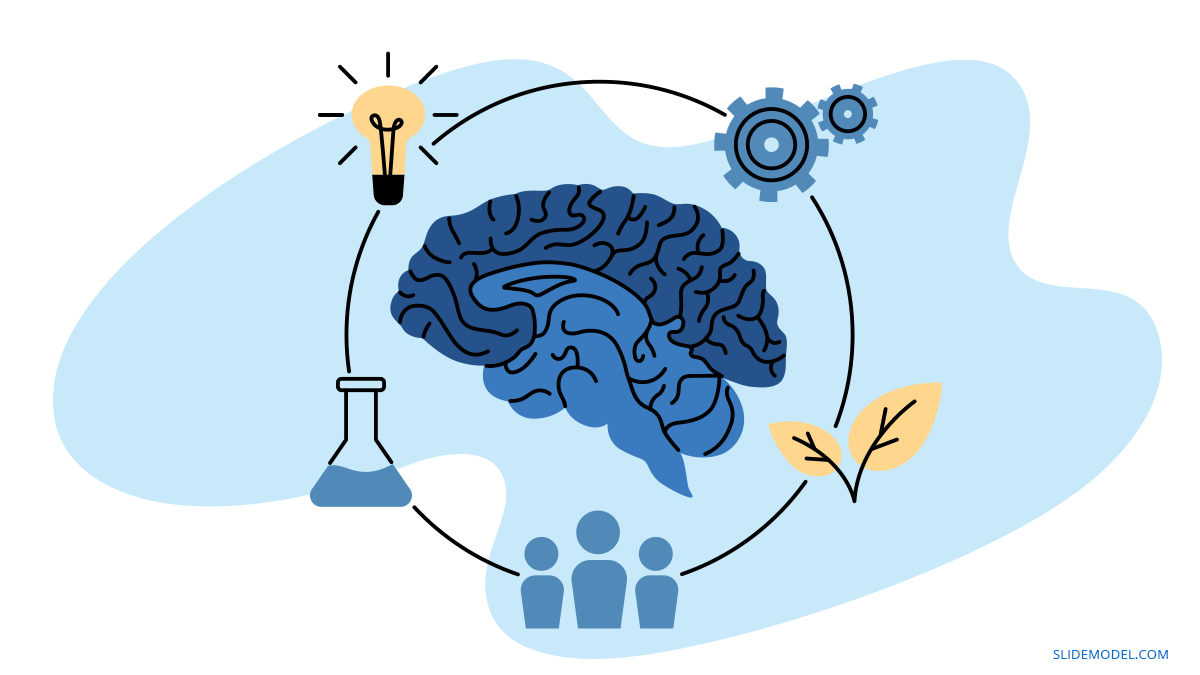
6 Types of Cognitive Bias to Take into Account When Presenting
When it comes to public speaking and giving presentations, the subject of bias gets particularly important.
- On the one hand, you don’t want your personal assumptions to make way into your PowerPoint presentation and, thus, undermine your credibility. No one wants to be publicly called out for flawed thinking.
- On the other hand, your audience too enters the room with certain personal biases. Some of them can play in your favor and make your delivery more effective. In contrast, negative cognitive bias may act as a barrier to engaging the audience.
Also, a presentation forces you to condense many ideas within several slides in your PowerPoint template. Your bias can impact the type of information you highlight and, in turn, the type of information your audience will retain.
To deal with the above, we made a list of cognitive biases to account for when presenting to an audience.
1. Anchoring Bias

An anchoring bias is a tendency to rely too heavily on the first piece of information obtained and use it as the basis for comparison.
Here’s a quick anchoring bias example: Your audience will use the presentation opening slide as a reference point for the rest of the speech if you mention a specific sales number.
While doing cognitive bias research, Tversky and Kahneman found that giving people some arbitrary numbers can prompt many to make incorrect estimates.
During one experiment, participants were asked to spring a wheel and choose between 0 and 100. Then, they were asked to adjust the number to indicate how many countries in Africa were in the United Nations. Spinners with a higher number gave higher estimates while low-spinners gave lower estimates. Each participant used the initial number as an anchor for their estimation.
Overall, the anchoring bias has the most impact on:
- The person’s price tolerance
- Your ability to negotiate
Respectively, anchoring bias can be both good and bad for your presentation. You can influence the audience to use your proposed number as a reference point. But then, if you mix it up, it would be much harder to pedal back on the initial claim.
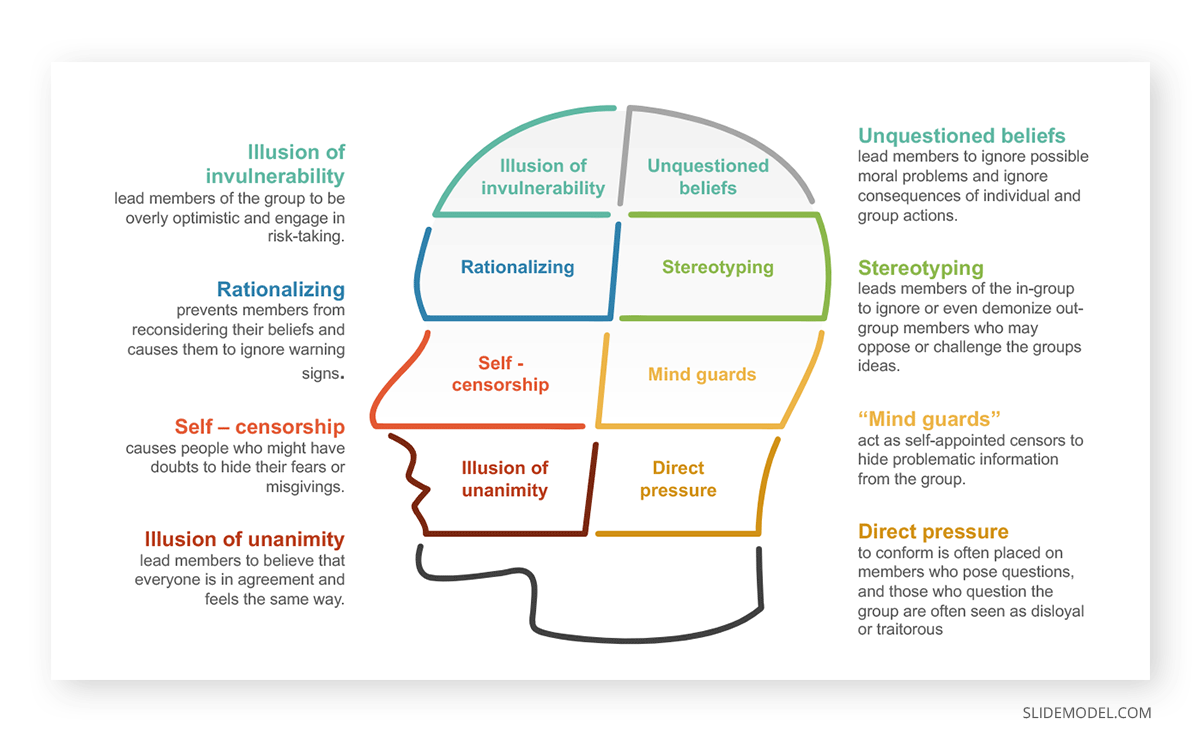
2. Confirmation Bias
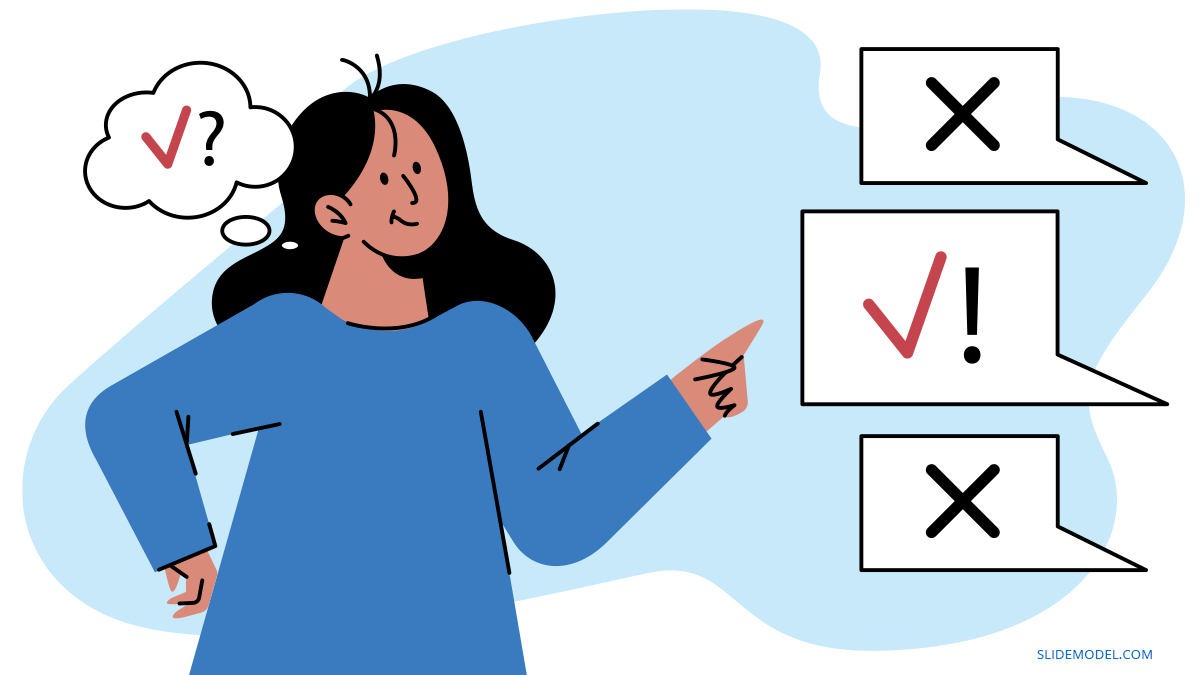
Confirmation bias tends to overvalue information that confirms previously held beliefs at the expense of evidence to the contrary.
Quick confirmation bias example: If your audience believes that the females make better leaders, they may have a tendency to agree more with all statements in this cohort, but protest to any sound data that proves otherwise.
This bias further affects information recall. Naturally, we’ll seek out information that supports or opposes a particular issue we already agree with. Confirmation bias prompts us to interpret all information in a way that upholds our existing ideas. Plus, we’ll remember only details that support those.
As Catherine A. Sanderson points out in her book Social Psychology, confirmation bias also helps form and re-confirm stereotypes we have about people:
“We are more likely to remember (and repeat) stereotype-consistent information and to forget or ignore stereotype-inconsistent information, which is one-way stereotypes are maintained even in the face of disconfirming evidence.”
Thus, when preparing a business presentation, try to learn more about your audience. Are they prone to certain stereotypes? Which ideas may land with them better? What data points may steer an inner conflict?
3. Bandwagon Effect (Groupthink)

The bandwagon effect states that it is more likely that a person will agree with a belief that is shared by many others.
It’s pretty well-known by most and often experienced as part of peer pressure. The problem, however, is that groupthink has many negative effects such as:
- Lower creativity in group activities
- Poor decision-making due to homogeneity of thought
- Failure to provide other people with a voice
- Overlooking better solutions due to narrow mindedness
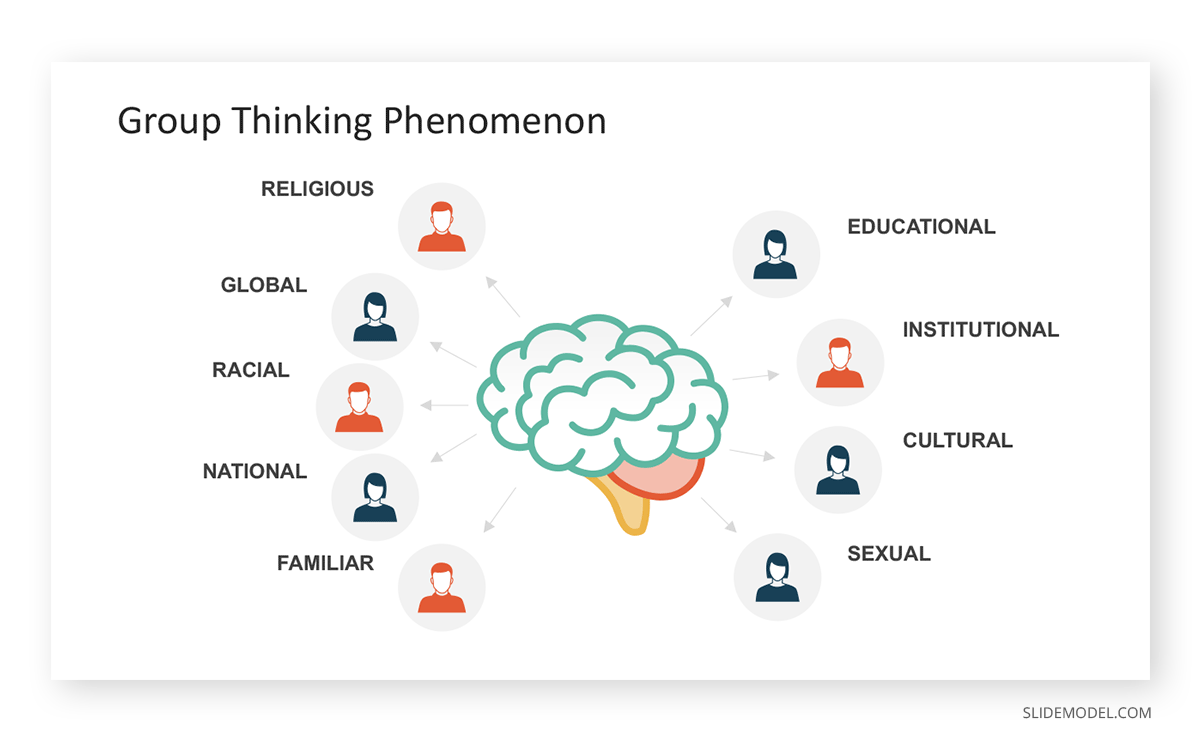
Groupthink is a common issue during presentations and public discussions. Some audience members may choose to keep the status quo instead of engaging with more radical ideas that you are proposing.
Here’s how to deal with groupthink during presentations:
- Look for early signs: If you pose questions to the audience but receive the same replies, it’s a strong tell-tale sign. To break the pattern, try to coax the individual thinking. Throw in a more controversial statement, ask for “if-anything-was-possible” kind of solutions, etc.
- Challenge the leader in the audience: In groupthink, most people choose to go with the mainstream idea, shared and reinforced by the group leader. Try to identify one among the audience and challenge them to consider a contrarian point.
- Host an anonymous poll. Anonymity can encourage voicing out less popular opinions. Then when showing the results to the group, many can get more comfortable with saying them out loud. You can also try using a word cloud, featuring contrarian thoughts.
4. The Dunning-Kruger Effect

Dunning-Kruger bias occurs when people believe they are smarter and more capable than they really are in a certain task. Even worse? This bias prevents us from recognizing our blind spots.
The effect was first described by David Dunning and Justin Kruger, two social psychologists. In their original study, they asked participants to take different tests. They found that people who did poorly on grammar, logic, and humor tests majorly overestimate how well they had performed:
- Test results placed them in the 12th percentile.
- While their self-assessment placed them in the 62nd percentile.
If there are people in your audience prone to this effect, it may be difficult to show the depth of the issue to them. They may also try to undermine your credibility and authority deliberately. On the other hand, you may be a victim of it too. This can negatively affect the quality and depth of your presentation.
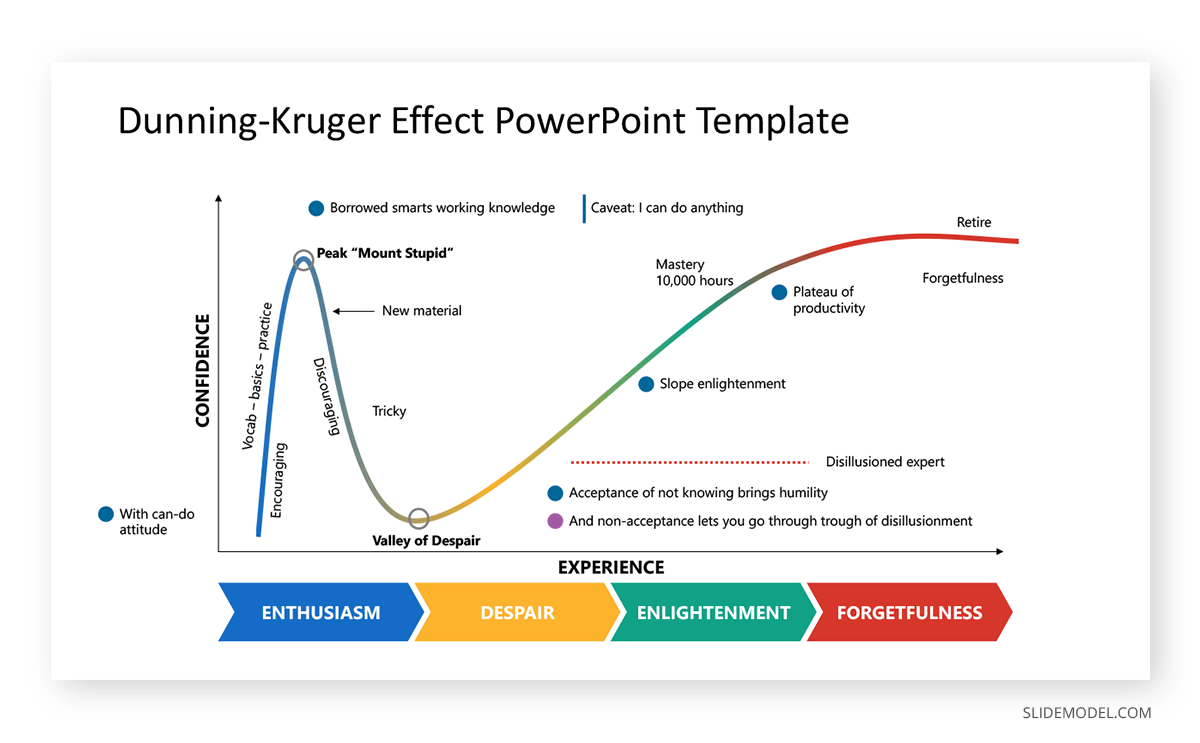
How do you deal with this effect? In the words of David Dunning:
“The first rule of the Dunning-Kruger club is you don’t know you’re a member of the Dunning-Kruger club. Be a little bit more careful about what pops out of your head or what pops out of your mouth.”
5. Ingroup Preference Bias
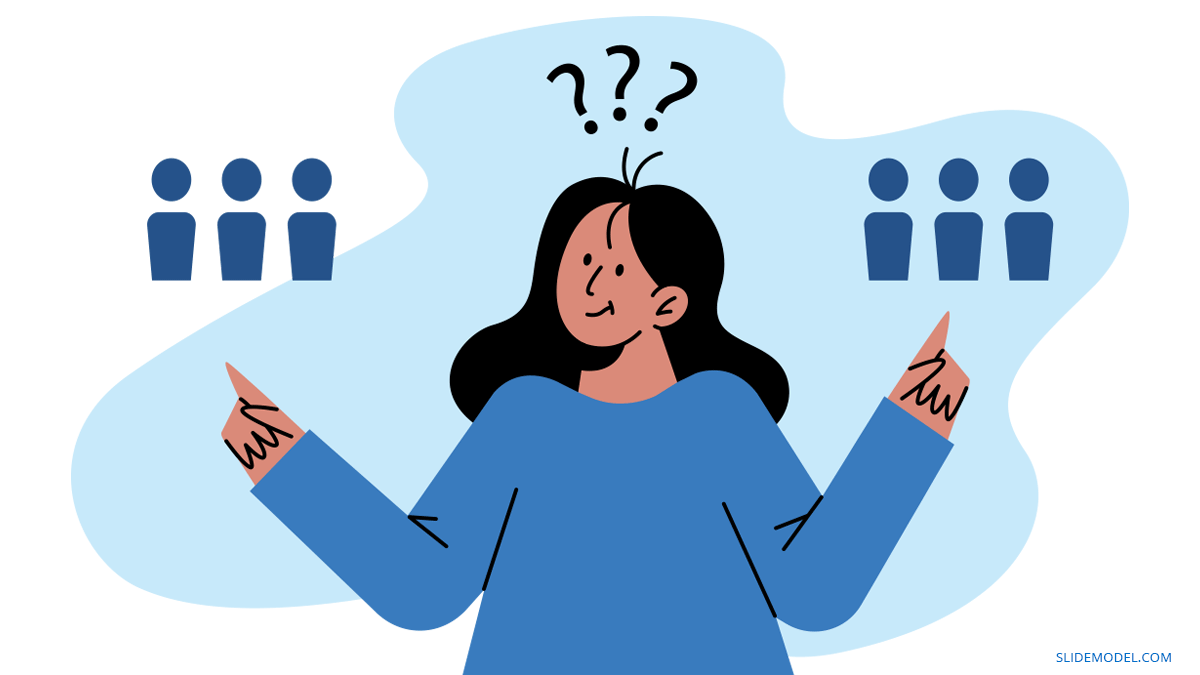
Ingroup preference bias indicates the tendency for people to form groups and then attribute positive characteristics to those in their own group. It’s also often called “favoritism.”
Ingroup preference bias example: if you give a presentation to a group of developers and designers, each will support opinions of their camp and be more critical towards what the others are saying.
The biggest problem is that ingroup bias is very easily triggered. People tend to form opposing camps at the slightest indication of differences. This type of bias can be challenging when you are talking to mixed groups and rallying them around the same cause, and not firing up the division further.
How do you deal with it? Try to unite people around the same cause within your presentation rather than promote any further divisions.
6. Availability Bias
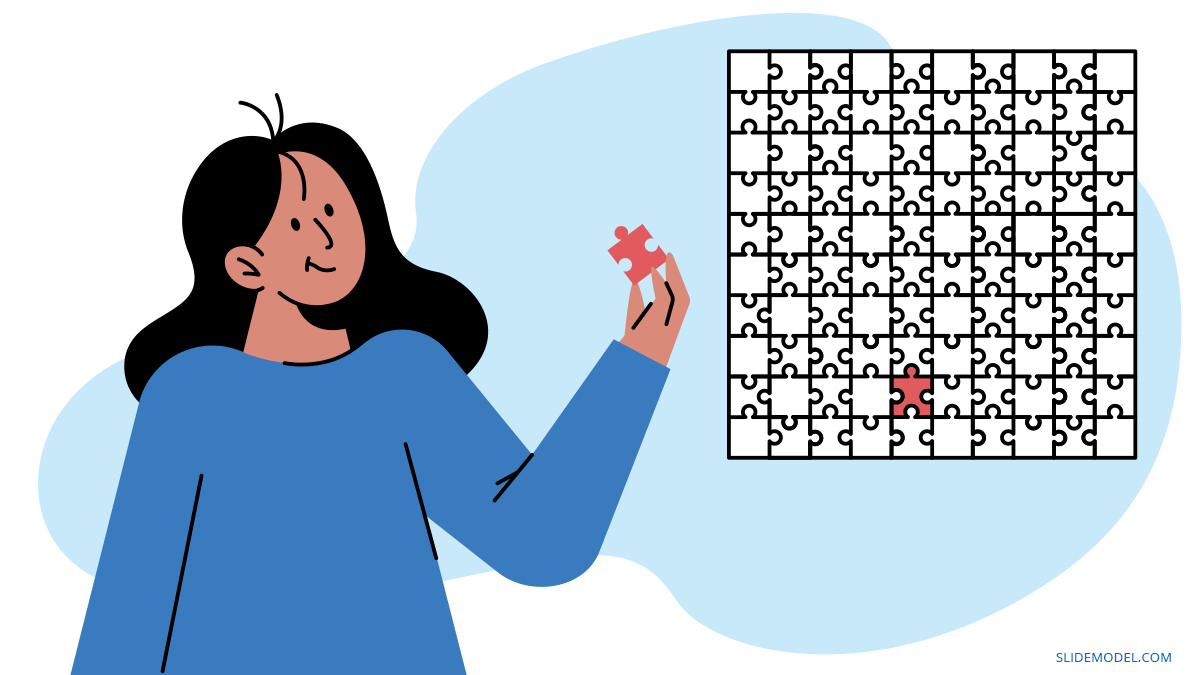
The availability bias (availability heuristic) is the tendency to use top-of-mind information to evaluate a topic or idea — even if this data doesn’t accurately represent it. This mental model prompts us to treat the most easily recalled information as valid and truthful but ignore alternative opinions and implications.
Availability bias example: If your audience is well-familiar with a competitive brand in a certain vertical, they may automatically assume that other companies have similar value proposition or pricing.
Hence, when preparing your presentation you’ll need to do two things.
- First, make sure that you don’t fall into this trap. Fact-check your sources. Ask another person to read through your deck and give their opinion.
- Verify that none of your presentation materials can bring negative availability bias among audience members. For example, if there was a recent product from a popular brand, mentioning them as a good example in your presentation can lead to negative connotations.
To Conclude
Cognitive biases are ever-present. No one can fully eliminate them from their thinking. But you can (and should!) proactively prevent the negative ones from creeping into your presentation and public speaking. Granted, you already have a list of common biases to watch out for!
